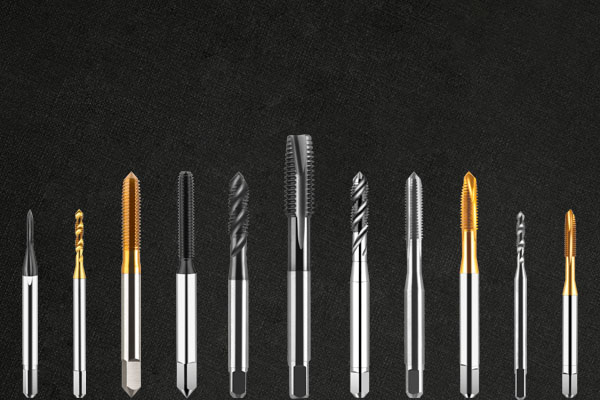
We’re diving into the fascinating world of threaded taps, a vital component in creating internal threads in various materials. Understanding the different types of threaded taps and their specific applications can help you choose the right tool for your needs. In this guide, we’ll explore the primary classifications of threaded taps and provide insights into their unique features and uses.
What Are Threaded Taps?
Threaded taps are tools used to cut internal threads in materials such as metal, plastic, or wood. They come in various designs, each suited to specific types of threads and applications. The correct selection of a threaded tap is crucial for achieving precise and reliable threads in your workpieces.
Major Classifications of Threaded Taps
Threaded taps can be classified based on several factors, including their design, threading style, material, and application. Let’s explore these classifications in detail:
1. By Design
1.1. Hand Taps
- Taper Tap: This tap has a gentle taper over the first few threads, making it easier to start threading by hand. It’s ideal for beginners or for use in softer materials.
- Plug Tap: Featuring a more pronounced taper than a bottoming tap but less than a taper tap, this is commonly used for through holes and blind holes.
- Bottoming Tap: With only one or two threads tapered, it’s used to thread the bottom of a blind hole after a taper or plug tap has been used.
1.2. Machine Taps
- Spiral Point Tap: Also known as a “gun tap,” it features a spiral point that helps push chips ahead of the cutting action, ideal for through holes.
- Spiral Flute Tap: Designed with a spiral flute that helps remove chips from blind holes, reducing the risk of clogging and breakage.
2. By Threading Style
2.1. Straight Flute Taps
- Standard Taps: These are the most common taps, with straight flutes that are versatile and suitable for a variety of materials and applications.
2.2. Spiral Flute Taps
- Right-Hand Spiral Flutes: Ideal for threading blind holes as they help evacuate chips upwards and out of the hole.
- Left-Hand Spiral Flutes: Typically used for threading left-hand threads or for certain machining setups.
2.3. Interrupted Thread Taps
- Designed with alternating teeth, these taps reduce friction and heat, making them suitable for tough materials.
3. By Material
3.1. High-Speed Steel (HSS) Taps
- Standard HSS: Suitable for general-purpose applications, offering a good balance of toughness and wear resistance.
- Cobalt HSS: Contains cobalt, providing greater heat resistance and durability, ideal for harder materials.
3.2. Carbide Taps
- Made from carbide, these taps offer superior hardness and wear resistance, suitable for high-speed machining and abrasive materials.
3.3. Carbon Steel Taps
- Often used for tapping softer materials, these taps are less durable than HSS or carbide but are cost-effective for light-duty applications.
4. By Application
4.1. General-Purpose Taps
- Designed for a wide range of materials and applications, these taps are versatile and commonly used in general machining.
4.2. Specialty Taps
- Pipe Taps: Used for creating internal threads in pipes, available in taper pipe threads (NPT) or straight pipe threads (NPS).
- Forming Taps: Also known as thread-forming taps, these don’t cut the material but instead displace it to form threads, ideal for producing stronger threads in ductile materials.
Choosing the Right Threaded Tap
Selecting the appropriate threaded tap involves considering the material you’re working with, the type of hole (through or blind), and the specific requirements of your application. Here are some tips to help you choose the right tap:
- Material Compatibility: Match the tap material to the workpiece material for optimal performance and tool life.
- Hole Type: Use spiral point taps for through holes and spiral flute taps for blind holes.
- Threading Style: Choose the threading style based on the desired thread quality and chip evacuation needs.
Summary
Understanding the various classifications of threaded taps can significantly enhance your machining efficiency and thread quality. By selecting the right tap for your specific application, you can achieve precise and reliable threads, reducing downtime and tool wear.
At Chuanhao, we are dedicated to providing high-quality threaded tools and expert advice to help you succeed. Stay tuned for more informative posts and updates from our team. Happy threading!


